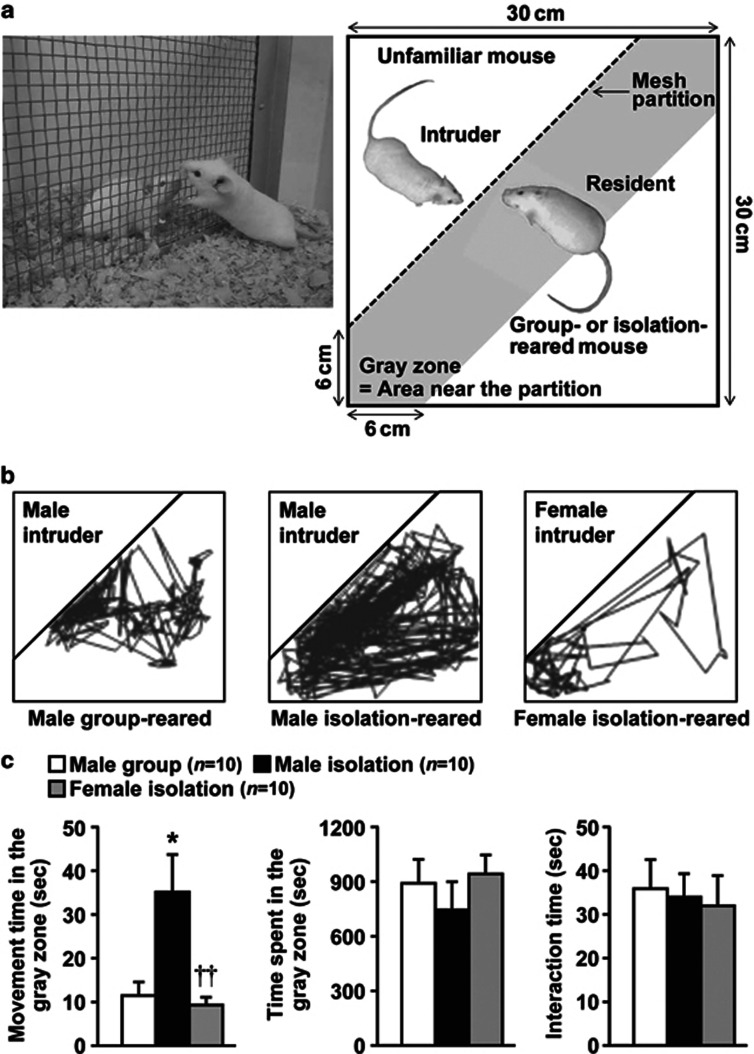Figure 1.
Effects of encounter stimulation on the behavior of mice. (a) Experimental design for the social encounter paradigm. A group- or isolation-reared mouse was individually placed into the large compartment of a novel clear Plexiglas cage divided by a mesh partition. An unfamiliar mouse was introduced into the unoccupied small compartment for 20 min. The gray zone was defined as the area near the partition. (b) Representative locomotor paths from resident male group-reared and isolation-reared mice and female isolation-reared mice during the 20-min encounters with the same sex intruders. (c) The locomotor activity and total time spent in the gray zone by the resident mice and the total time the resident and intruder mice spent interacting were analyzed according to the description in the Materials and Methods. The data are expressed as the mean±SEM of 10 mice/group. *p<0.05, compared with the male group-reared mice. ††p<0.01, compared with the male isolation-reared mice.

